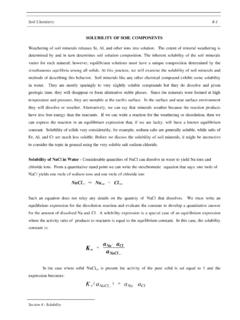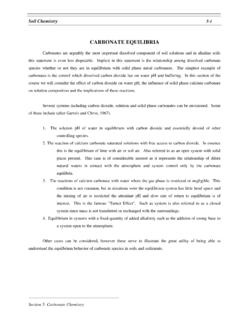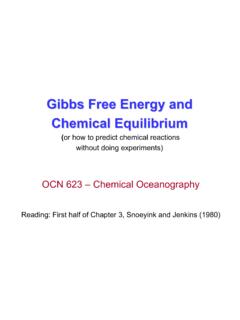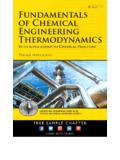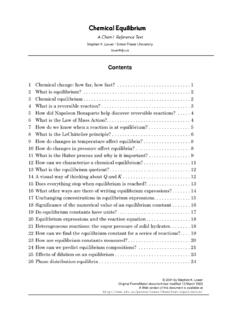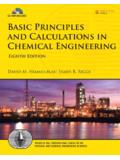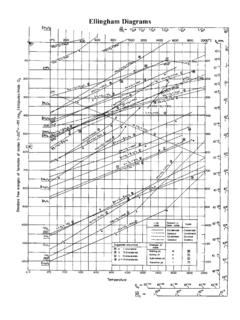Transcription of OXIDATION REDUCTION - University of California, Davis
1 Soil Chemistry 9-1. OXIDATION REDUCTION . In soil systems, rapid changes in moisture content strongly affects soil aeration status. In addition to changes in bulk conditions, there are microsites or zone where diffusion of oxygen is restricted, such as small pores filled with water and the interior of aggregates where oxygen consumption is more rapid than oxygen diffusion. In areas were there is better access to soil air and pockets of easily decomposed organics, and intense decomposition can deplete available oxygen and produce a number of redox-active organic compounds.
2 From a global perspective redox is an important aspect of energy and carbon transfer. Carbon REDUCTION and its subsequent OXIDATION fuel the biological world. Carbon REDUCTION or gain in electrons is often called photosynthesis by the uninitiated and the reverse OXIDATION reaction is called respiration when applied to humans and other large animals. Microbial respiration accompanies or is synonymous with mineralization. Regardless of your perspective, redox reactions are important aspects of soil chemistry. Redox reactions change the speciation and solubility of many elements, create new compounds and alter the biochemistry of soils.
3 In a complex mixture such as soils the interpretation of redox relationships is difficult. Since the dynamics of soil oxygen which drives the changes in redox potential are rapid, equilibrium may not be attained. From a thermochemistry view point redox is not at equilibrium, because all of the energy yielding compounds by definition contain excess free energy and are unstable with respect to carbon dioxide and water. Processes which reduce oxygen levels and decrease redox potentials are driven by microbial consumption of oxygen. Conditions necessary for lowering redox potentials include, a source of decomposable organic materials ( energy source), a population of microbes capable of utilizing this energy source for metabolism, and a restriction on the resupply of oxygen.
4 These requirements are not uniformly distributed in soils and sediments. Thus, redox reactions and redox potentials are not uniform throughout the soil matrix. In fact, redox potentials are highly variable and therefore are best used as an indication or relative status of the soil. Section 9- OXIDATION REDUCTION Soil Chemistry 9-2. Eh -pH RELATIONSHIPS. Thermochemistry background The Gibbs free energy (G) may be defined in differential form as: dG = - Sd T - V dP - w (1). where w' is defined as the useful work in a chemical system ( non-pressure, volume work) in our case this will be the electrical work of the system.
5 At constant T and P we find: dG = - w (2). Also remembering that at equilibrium dG = 0 and therefore the useful work or electrical work in the system is also zero at equilibrium. In an electro- chemical system the work is derived from the transfer of electrons from one compound to another and is equal to the potential and the charge transferred w'= EdQ, where E is the potential and Q is the quantity of charge transferred. In a chemical reaction where n electrons are transferred per mole of reactant, the electrical work is nFE where E is the emf of the system, F is the Faraday constant.
6 Therefore: d G = - nFE (3). and d G o = - nFE o (4). From thermodynamics it can also be shown (but not here) that: dG = dG 0 + R T ln Q (5). Q is the reaction quotient. Equating (3), (4) and (5) we find (6) which is the familiar Nernst Equation RT. E = Eo - lnQ (6). nF. Other useful relations are derived from (4) and the relationship dGo = -RT ln Ko to obtain: o - n F E = -RTln K o (7). Section 9- OXIDATION REDUCTION Soil Chemistry 9-3. Rearranging and substituting gives: log K o = n Eo (8). When E is expressed in volts. Solving for Eo evaluating constants and specifying temperature as 298 oK.
7 Expressing the result in millivolts gives: o E = log K o (9). n The Nernst Equation (6) is the basis for the measurement of redox potential in soils and sediments. Replacing E with Eh and Eo with Eho and writing the reaction as a REDUCTION produces the familiar equation used for soil redox potential (Eh) shown in McBride (page 240). o (reduced species). E h = Eh - log (10). n (oxidized species) ( H + )m In aqueous systems the bounds of Eh is dictated by the stability of water. In oxidizing systems the OXIDATION of water to yield oxygen and protons via the following reaction is the upper boundary for Eh.
8 Since the reaction yields protons, the stability is a function of pH. 2 H2O O2 + 4 H+ + 4 e- Eo = volts (11). Using the Nernst Equation evaluated at 25oC gives the following: P O2 ( H +) 4 . Eh = E o + log 2 (12). 4 (H 2O) . for conditions where the activity of water is taken to be unity the equation reduces to: E h = Eo + log PO 2 + (H + ). 4. o E h = E + log P O2 - pH (13). E h = + log P O2 - pH. Section 9- OXIDATION REDUCTION Soil Chemistry 9-4. Water OXIDATION depends on both pH and oxygen pressure. If an arbitrary oxygen pressure is chosen, than the plot of Eh vs pH will have a negative slope of V or 59 mV per pH unit and an intercept of Eo ( volts).
9 Note that if (H+) is 1 mole/liter ( pH = 0), and PO2 is 1 atmosphere standard conditions are met and Eh = Eo, which is the intersection of the line with the vertical axis in Eh-pH plots. At the other extreme of reducing conditions in aqueous systems, hydrogen ion REDUCTION to hydrogen gas is the lower stability of the system. As written below for as an OXIDATION potential, the reaction is: H2 g 2 H+aq + 2 e- Eo = volts (14). Section 9- OXIDATION REDUCTION Soil Chemistry 9-5. ( H +) 2 . Eh = E +. o log . 2 PH 2 . o E h = E - P H 2 - pH. (15). but since E o = 0 for the Hydrogen half cell, E h = - P H 2 - pH.
10 At standard conditions where PH2 = 1 atmosphere and pH = 0, Eh = Eo = 0. For a given hydrogen pressure the Eh decreases with a slope of volts per pH unit and has an intercept of Thus the stability limits for Eh are bounded by hydrogen and oxygen gas evolution from water. Limits of 1 atmosphere of oxygen and/or hydrogen are not realistic, however they give the bounds for the system. Other values for Eh given oxygen levels of atmospheres can easily be calculated and will be parallel to the 1 atmosphere lines. At pH = 0, log PO2 = is the oxygen pressure required for Eh to equal 0.
